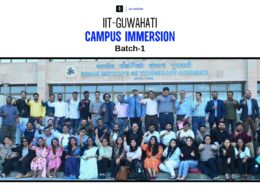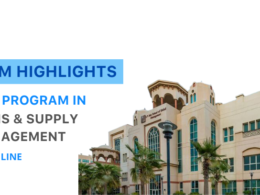Are you ready to revolutionize your organization’s future?
Picture this: Strategic Human Resources (HR) as your guiding star, leading you through the ever-evolving complexities of the 21st-century business realm.
From unleashing AI-powered recruitment to championing diversity and inclusion, Strategic HR holds the key to unrivaled success.
Get ready to embark on an exhilarating exploration of the transformative world of Strategic HR –a journey that promises growth, innovation, and boundless possibilities!
Your Ultimate Guide to Transforming Organizations with Strategic HR Analytics
Strategic Human Resources (HR) goes beyond the traditional administrative functions of HR and plays a pivotal role in aligning HR practices with overall business goals. In today’s dynamic business landscape, Strategic HR focuses on leveraging human capital to drive innovation, growth, and competitive advantage.
It involves developing HR strategies that contribute directly to the achievement of organizational objectives, making it a crucial aspect of modern business success.
The Evolution of HR: From Traditional to Strategic
The historical evolution of HR has been a remarkable journey from its transactional roots to a strategic powerhouse. Traditionally, HR was primarily concerned with administrative tasks like payroll and compliance. However, over time, organizations recognized the potential of HR to influence business outcomes.
Strategic HR emerged as a response to the need for HR to contribute strategically to the organization’s success. This shift involved transitioning from reactive, one-size-fits-all approaches to proactive, tailored strategies that align HR practices with business objectives.
Key Components of Strategic HR
1. Workforce Planning
Workforce planning is the process of forecasting an organization’s future talent needs and ensuring that it has the right people with the right skills in the right roles at the right time. It involves analyzing current workforce demographics, identifying skill gaps, and developing strategies to address them.
By aligning workforce planning with business goals, organizations can ensure they have the necessary human resources to drive growth and innovation.
2. Talent Acquisition
Talent acquisition is about identifying and attracting the best-fit candidates to join the organization. This process includes crafting compelling job descriptions, sourcing candidates through various channels, conducting interviews, and assessing candidates’ skills and cultural fit.
Effective talent acquisition strategies help organizations build a pool of talented individuals who can contribute to achieving business objectives.
3. Onboarding
Onboarding is the process of integrating new employees into the organization and ensuring they have the resources and support needed to succeed in their roles. It involves providing orientation, training, and introducing new hires to the company culture. A well-designed onboarding program sets the tone for a positive employee experience and can lead to higher retention rates and faster productivity.
4. Data-Driven Insights
Strategic HR relies on data and analytics to make informed decisions about various aspects of human resources management. HR analytics involves collecting and analyzing data related to employee performance, engagement, turnover, and other relevant metrics.
By extracting insights from data, HR professionals can identify trends, patterns, and opportunities for improvement, enabling them to develop targeted strategies that drive positive outcomes.
5. Employee Performance Management
Effective performance management involves setting clear performance expectations, providing regular feedback, conducting performance reviews, and recognizing and rewarding achievements.
Strategic HR aims to align individual performance goals with overall organizational objectives, creating a culture of accountability and continuous improvement.
6. Employee Engagement and Development
Engaged employees are more likely to be productive, innovative, and committed to the organization’s success. Strategic HR focuses on creating a positive work environment, offering opportunities for skill development and career growth, and fostering open communication between employees and management.
By investing in employee development and engagement, organizations can enhance their competitive advantage.
7. Succession Planning
Succession planning involves identifying and preparing high-potential employees to take on leadership roles within the organization. By grooming internal talent for key positions, organizations can ensure a smooth transition during leadership changes and minimize disruptions to business operations.
8. Diversity and Inclusion
Strategic HR recognizes the value of a diverse and inclusive workforce. It involves implementing initiatives to attract, retain, and promote individuals from various backgrounds, perspectives, and experiences.
Diversity and inclusion not only contribute to a more innovative and creative workforce but also enhance the organization’s reputation and brand.
9. Strategic Workforce Development
This component focuses on aligning employee development programs with the organization’s long-term strategic goals. It includes identifying critical skills and competencies needed for future success, designing training programs, and measuring the effectiveness of development initiatives in meeting organizational objectives.
Implementation of Strategic HR Analytics
Let’s delve into the implementation of Strategic HR through best practices and real-world case studies:
1. Real-World Case Studies
Real-world case studies offer practical insights into how organizations have effectively integrated Strategic HR practices into their operations. These case studies provide concrete examples of how HR strategies were conceived, developed, and executed to achieve specific organizational goals.
By studying these cases, HR professionals gain a deeper understanding of the practical applications of Strategic HR concepts.
2. Alignment with Business Strategies
Strategic HR emphasizes the importance of aligning HR practices with broader business objectives. Case studies illustrate how organizations have strategically aligned their HR initiatives with the overall goals of the company.
These examples showcase instances where HR played a pivotal role in driving business success by ensuring that HR activities were directly tied to the organization’s mission, vision, and strategic plans.
3. Talent Development Initiatives
Through case studies, we can observe how organizations have implemented talent development programs that focus on nurturing the skills and capabilities of their workforce. These initiatives include training, mentorship, leadership development, and succession planning.
By investing in talent development, organizations can enhance employee engagement, improve retention rates, and build a pipeline of skilled future leaders.
3. Diversity and Inclusion Programs
Strategic HR emphasizes creating diverse and inclusive workplaces. Case studies highlight organizations that have successfully implemented diversity and inclusion initiatives, showcasing how these efforts lead to a more innovative and collaborative workforce.
By embracing diversity and inclusion, companies can tap into a broader range of perspectives and experiences, driving creativity and better decision-making.
4. Employee Satisfaction and Productivity
The implementation of Strategic HR practices often results in improved employee satisfaction and increased productivity. Case studies provide examples of organizations that have effectively used HR strategies to enhance the employee experience, leading to higher levels of engagement, motivation, and commitment. As a result, organizations experience higher levels of productivity and overall performance.
5. Measurable Impact
Case studies offer insights into how organizations measure the impact of their Strategic HR initiatives. By analyzing key performance indicators (KPIs) such as employee turnover rates, performance metrics, and engagement scores, organizations can quantitatively assess the effectiveness of their HR strategies. These measurements provide valuable feedback for continuous improvement.
6. Enhanced Business Performance
Ultimately, the case studies demonstrate how Strategic HR contributes to the overall business performance of organizations. By strategically managing their human capital, companies can achieve a competitive advantage, drive innovation, and achieve sustainable growth. The success stories showcased in these case studies serve as inspiration for other organizations looking to enhance their HR practices.
Let’s break down the concept of measuring the impact of Strategic HR using KPIs and metrics:
1. Importance of KPIs and Metrics
Key Performance Indicators (KPIs) and metrics serve as critical yardsticks for assessing the success of Strategic HR initiatives. These quantifiable measures provide objective insights into the outcomes and effectiveness of various HR strategies. By tracking relevant KPIs, organizations gain a clear understanding of how their HR efforts are contributing to overall business objectives.
2. Employee Turnover Rates
One essential metric in measuring the impact of Strategic HR is employee turnover. A high turnover rate can indicate issues with recruitment, retention, or employee satisfaction. By monitoring turnover rates, organizations can identify trends and patterns, enabling them to take proactive measures to improve employee retention and reduce turnover costs.
3. Employee Engagement and Satisfaction
KPIs related to employee engagement and satisfaction offer insights into the overall health of the workforce. Metrics such as employee surveys, feedback scores, and participation in development programs help gauge the level of engagement and contentment among employees. Higher engagement often correlates with improved productivity and organizational performance.
4. Productivity and Performance Metrics
Measuring changes in employee productivity and performance is crucial to assessing the impact of Strategic HR. By analyzing metrics such as output, quality of work, and meeting deadlines, organizations can ascertain if HR initiatives are positively influencing employee performance and overall productivity levels.
5. Alignment with Business Goals
Strategic HR initiatives should align with the broader business goals and objectives. Metrics that track how well HR efforts contribute to achieving these goals provide a clear indication of Strategic HR’s effectiveness. For instance, tracking how HR initiatives impact revenue growth, customer satisfaction, or market share can showcase the direct linkage between HR strategies and business outcomes.
6. Training and Development ROI
Measuring the return on investment (ROI) for training and development programs is another essential aspect of measuring the impact of Strategic HR. Organizations can assess whether the skills and knowledge gained through these programs lead to improved employee performance, increased efficiency, and better contributions to organizational success.
7. Diversity and Inclusion Metrics
KPIs related to diversity and inclusion efforts provide insights into how well organizations are fostering a diverse and inclusive workforce. Metrics might include the representation of underrepresented groups, inclusivity scores, and retention rates among diverse employees. These metrics help track progress in creating an inclusive workplace culture.
8. Continuous Improvement
By regularly collecting and analyzing relevant HR metrics, organizations can identify areas for improvement and refinement. Measuring the impact of Strategic HR is an ongoing process that enables organizations to make data-driven decisions, adjust their strategies, and optimize outcomes over time.
9. Data-Driven Decision-Making
The use of KPIs and metrics in measuring Strategic HR impact promotes data-driven decision-making. These metrics provide objective evidence that informs HR professionals and organizational leaders about areas of success or areas that need attention. Data-driven insights lead to more informed and effective strategic HR planning.
Strategic HR is the dynamic compass guiding organizations toward a future of innovation, inclusivity, and optimized performance. With its transformative power, real-world examples, and measurable impact, Strategic HR becomes the driving force for success in the ever-evolving business landscape. Embrace this journey to unlock boundless possibilities and shape a thriving future.






